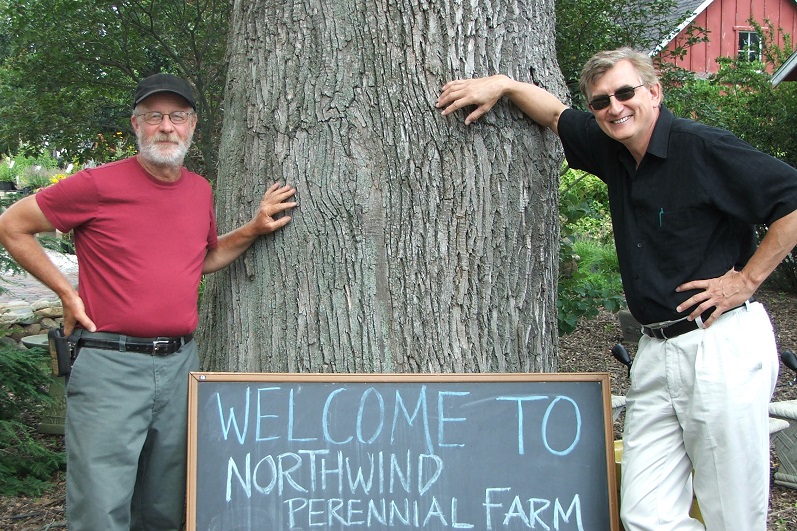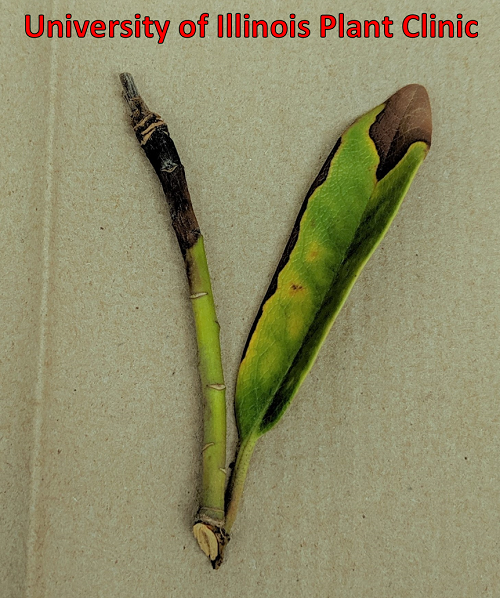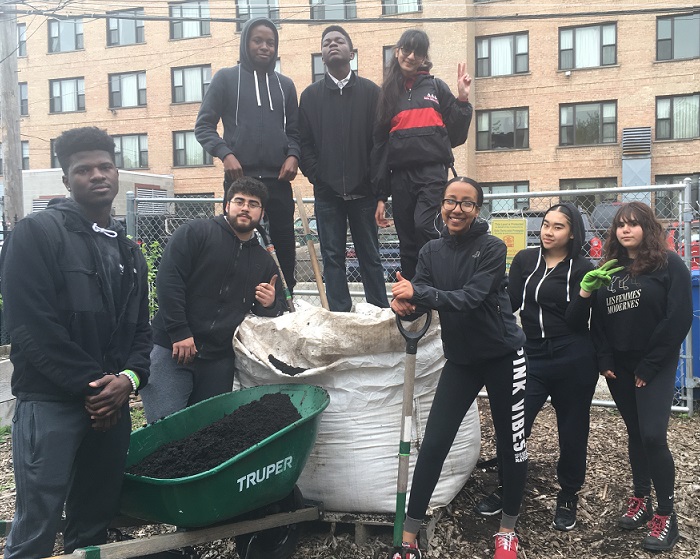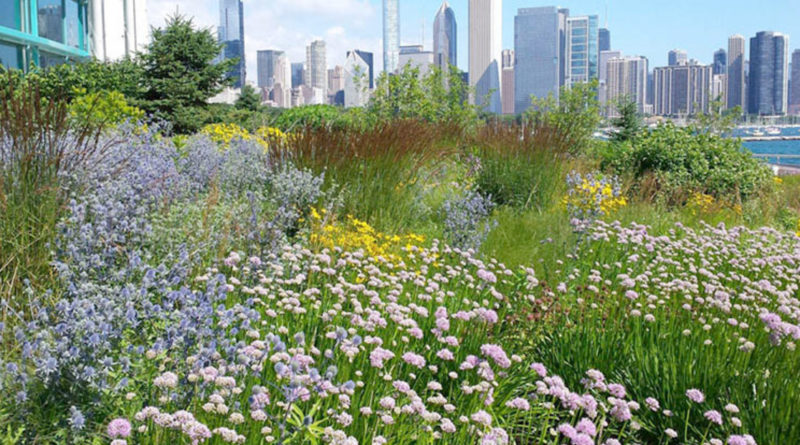Roy and Piet: The Perennial Whisperers
Podcast: Play in new window | Download (Duration: 1:43:50 — 48.9MB)
Subscribe: Apple Podcasts | Spotify | Android | iHeartRadio | Podchaser | Email | TuneIn | RSS | More
(July 21, 2019) To be clear, Roy and Piet are not a stage act that involves magic and tigers. Instead, Roy Diblik and Piet Oudolf are world famous plantsmen who have created magical gardens like the Lurie Garden in Chicago. They have also introduced millions to the concept of “plant communities.” And I consider myself privileged to know them both and to be able to bring them back to my show.
 I’m not actually sure how long I’ve known Roy Diblik. It goes back somewhere between fifteen and twenty years. All I know is that the first time he was on my radio show was back when I was at Gargantua Radio down the dial. And he was so nervous that he had to have a beer before the show started…at noon. Now, I’m the one who might have to calm my nerves. That’s because Roy has become a pretty fancy–albeit still humble–guy.
I’m not actually sure how long I’ve known Roy Diblik. It goes back somewhere between fifteen and twenty years. All I know is that the first time he was on my radio show was back when I was at Gargantua Radio down the dial. And he was so nervous that he had to have a beer before the show started…at noon. Now, I’m the one who might have to calm my nerves. That’s because Roy has become a pretty fancy–albeit still humble–guy.
He grew some 22,000 plants that went into the Lurie Garden in Chicago’s Millennium Park. He is a founder and co-owner of Northwind Perennial Farm in Burlington, Wisconsin. He wrote the book, The Know Maintenance Perennial Garden, which introduced his personal concept of plant communities that live and play well together. Basically, he’s been studying perennials for more than 35 years and passing that knowledge along to anybody who will listen.
I met Piet Oudolf when he and Roy were busy putting the Lurie Garden together at the turn of the century. He’s one of those people who are changing the very concept of what a garden means in the 21st century. He’s designed gardens all over the world–many of them in the United States, including New York City’s High Line. He’s known as a leader in the New Perennial Movement, something I hadn’t even heard of until I read this article. And now he’s designing a garden in my home town of Detroit, on Belle Isle in the Detroit River. Hmm, I think I sense a remote broadcast from Detroit in our future.
Roy and Piet are meeting in Chicago again, this time to speak at the The Perennial Plant Association’s National Symposium in Rosemont, Illinois. The symposium is held in conjunction with All-America Selections and National Garden Bureau. If you want to register, you’d better do it quickly–you have until the end of the day, July 21.
The symposium is July 28 – August 2, 2019. But there’s a special “Monday Education” series of pre-conference lectures on July 29 at Crowne Plaza O’Hare in Rosemont. Registration for that day will be accepted through July 22, so you have one extra day to get on board.
Meanwhile, you can hear Roy Diblik and Piet Oudolf on our show this morning for FREE! Here are some of the things that might be discussed.
- Plant communities – Roy always wants to talk about which plants do well together
- The College of DuPage is setting up a program that will let you earn a certificate in growing annuals, vegetables and woody plants sustainably
- Roy says he’s working on an installation in Mt. Horeb, Illinois that will use 19,000 plants
- Less is more: Roy says that the trend is away from gallon containers, to 2.5″ plugs. If you’re a good parent, those plants become gallon-sized in six weeks, saving you lots of money. It’s already a trend in Europe; as usual, we’re way behind the curve.
A deadly plant disease arrives in Illinois
You could easily make an argument that Americans are terrible stewards of their trees. Emerald Ash Borer has killed hundreds of millions of ash trees in North America since 2002. Before that, American elms were devastated by Dutch elm disease. And before that, the American chestnut went from being the dominant eastern hardwood tree to being a cautionary tale. At one time there were four billion trees in our forests. Now, there are virtually none.
Here’s the saddest part. The pests and diseases that wiped out those species were brought to this country by humans–often in the horticultural industry!
Now we’re facing what might be the greatest threat of all. Our Midwest oaks are in peril.
In late May 2019, a routine survey in Indiana confirmed the presence of P. ramorum on rhododendrons received from Oklahoma. The original source of the plants were nurseries in Washington and British Columbia. Shipping records revealed that plants from the same nurseries were routed through Oklahoma to garden centers in 18 Midwest states, including Illinois. Illinois Department of Agriculture and United States Department of Agriculture field staff inspected stores which had received plants from the same shipment and collected sample s from symptomatic plants. Those samples were tested at laboratories including the University of Illinois Plant Clinic, Michigan State, Cornell, Kansas State, and USDA labs. P. ramorum was confirmed on plant material in stores across the state.
Then, on July 2, the Illinois Department of Agriculture reported that P. ramorum had been found in Illinois. Sites included Walmart locations in Cook, Jackson, Jefferson, Lee, Macon, Monroe, St. Clair, Stephenson, and Will Counties, and one Hy-Vee location in McDonough County. In all, 18 states received shipments of the infected plants.
Why is this big news? The University of Illinois Plant Clinic explains.
Phytophthora ramorum is a federally regulated plant pathogen which has devastated native plants and forests in California and Oregon over the past several decades. The pathogen causes two groups of symptoms, often referred to as two separate diseases: Ramorum blight and Sudden Oak Death. P. ramorum can infect a wide range of hosts, including many popular ornamentals (rhododendron, azalea, lilac, viburnum, and more), as well as oak trees. Ramorum blight causes leaf discoloration and branch dieback on the ornamental hosts, while Sudden Oak Death causes rapid wilting, decline, and death of oak and tanoak trees. Ramorum blight usually does not kill infected plants, but symptoms will continue to reoccur.
In the case of this shipment, positive confirmations have been made on the following plants and varieties in Illinois and/or other states to date:
Rhododendron: Cat Cunningham Blush, Firestorm, Holden, Minnetonka, Nova Zembla, Percy Wiseman, Purpureum Elegans, Roseum Elegans, Wojnars Purple.
Lilac: Common Purple, Persian Lime.
The Morton Arboretum Plant Health Report warns that “P. ramorumis soil-borne and water-borne and can be spread by infected plant material, soil and in water.”
Here’s a check list from the Illinois Plant Clinic, if you’re concerned about a recent purchase.
- Was the plant purchased in 2019?

- Is the plant a lilac, rhododendron, or azalea?
- Is the plant displaying any of the following symptoms:
o Dark brown spots, blotches, or tip dieback on leaves?
o Dark brown discoloration along the leaf margins?
o Dark brown discoloration of the branches, usually starting at the tip of the branch?
If the answers to all of the above questions is YES, please contact the Illinois Department of Agriculture at
(815) 787-5476.
The photo on the right gives you an idea of what to look for.
While P. ramorum–especially when it becomes Sudden Oak Death–is a serious problem, our friend Beth Botts at The Morton Arboretum writes that there is no reason to panic…yet. Here’s what they want you to remember.
- Sudden Oak Death has NOT been found in Illinois at this time
- Plants purchased prior to 2019 are unlikely to be infected
- Plants that are suspected of having this disease should NOT be moved or destroyed. The Illinois Department of Agriculture needs to be contacted.
- Do NOT submit samples to any public garden, plant clinic, park district or U of I Extension office. Contact the Illinois Department of Agriculture at (815) 787-5476. They are the organization that handles this problem
Which takes us to Tom Buechel, President of Buechel Horticulture Solutions and Compliance Officer for Nature Hills/Plant Sentry. He was on The Mike Nowak Show with Peggy Malecki almost a year ago. Here’s what I wrote at the time.
Enter Nature Hills Nursery, which calls itself “America’s Largest Online Plant Nursery.” It has developed a comprehensive plant compliance system called Plant Sentry™. This new program is designed to ensure that e-commerce vendors grow and ship only plants that are fully compliant with the regulations and restrictions of the 48 states in the continental U.S.
Plant Sentry™ Compliance System was inspired by the SANC (Systems Approach to Nursery Certification) program, which was developed under the guidance of the National Plant Board, AmericanHort, the US Department of Agriculture – APHIS, and other green industry leaders.
But this requires a comprehensive national database for plant compliance, including plant regulations and restrictions of the 48 continental U.S. states, and more:
The Plant Sentry system also includes a shipment certification program. Proprietary e-commerce software prevents the shipment of a restricted plant to each state. Each online order is automatically reviewed to remove any restricted plants based upon the customer’s zip code, thus guaranteeing that only compliant plants are shipped.
In the unlikely event that a restricted plant is shipped, a robust recovery and emergency communications plan is implemented. The state and customer are notified so that proper procedures can be followed for the return or destruction of the non-compliant plant material.
At the time, we talked mostly about how invasive plants could be kept at bay. With the news that P. ramorum might have been unleashed in 18 or more states, it’s obvious that we need to talk about diseases and pests, too.
Buechel points out that pests, diseases and invasive species steal our air, beauty, energy, water, tax dollars and more. With the introduction of Phytophthora ramorum to the area, he asks some questions.
- What happened in the chain from grower to retailer?
- What are we learning this time around vs. the last?
- Who is accountable and how should we proceed in the event it happens again?
- How can we do our best to prevent this at all levels in the industry chain?
That’s where Plant Sentry™ comes in. And that’s what we’re talking about this morning.
…not for all the tea in China!
No, I’m not being cranky. That’s the name of this year’s play by the Green Scene, whose mission is “growing community and creativity in gardens.” As they note on their website, Green Scene offers in-school arts residencies that “cross pollinate science, literacy and theater.”
 In this particular case, Chicago teens meet at Winthrop Harmony Arts Garden in Uptown, transformed from an abandoned lot into a wheelchair accessible garden, and work from April to September, growing food and “unearthing their creativity.” They adapt and stage earth-based tales and present them free to the K-8 community.
In this particular case, Chicago teens meet at Winthrop Harmony Arts Garden in Uptown, transformed from an abandoned lot into a wheelchair accessible garden, and work from April to September, growing food and “unearthing their creativity.” They adapt and stage earth-based tales and present them free to the K-8 community.
Last year, I attended a performance of “Helianthus!” and welcomed some of the actors into the WCGO studios. This year, we’re catching them before they open their run of “…not for all the tea in China!” on July 25 and 26–five performances in all.
If you haven’t figure it out, this pageant will follow this history of one of the greatest drinks in the history of civilization–tea. Once again, creator and director Martie Sanders joins Peggy and me, along with a couple members of the cast. Here’s how she introduces them.
Bem Asfaw is entering 11th grade at Jones College Prep— in 8th grade she directed a Black History Month showcase and took dance in school — Some of the characters Bem plays in our show are A Teapot, a Narrator, and a Fighter.
Bem helped her grandma in her garden before she moved away.
Timothy Keme just graduated from Evanston Township – In school he played in The Bluest Eye and The Colored Museum — Some of characters Timothy plays in our show are: a space alien, a sea captain and King George the III.
He’s had no previous gardening experience before his time with Green Scene Chicago.
On with the show!


